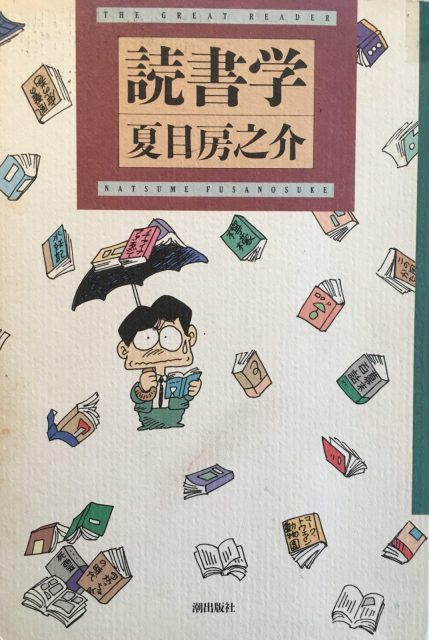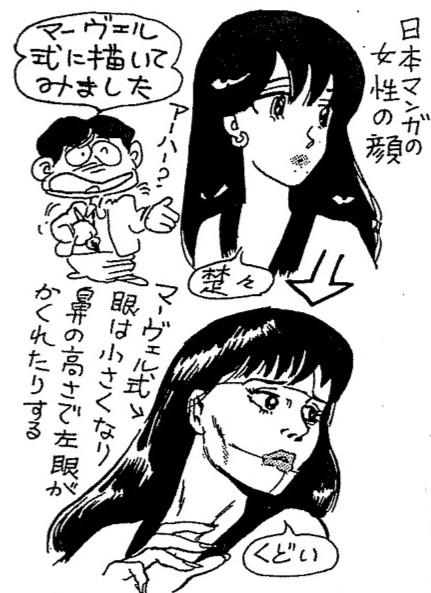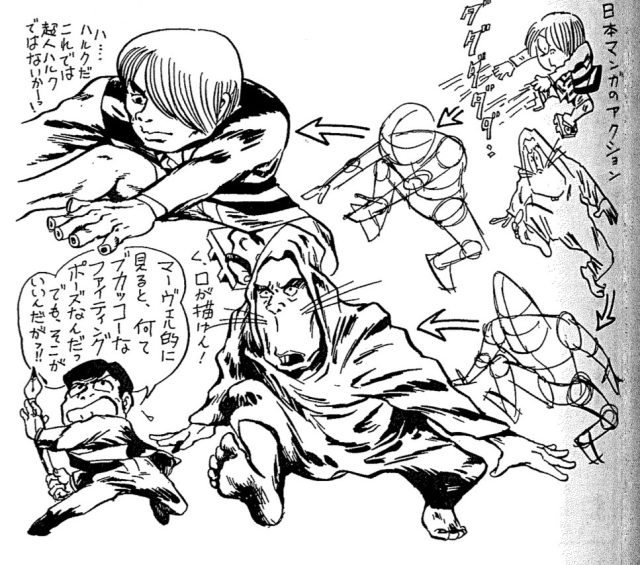Readingology, published in 1993, was a collection of Natsume Fusanosuke’s monthly manga columns that ran in Comic Tom (Komikku Tomu) magazine from May 1986 through January 1991. Readingology consists of over 60 mini-essays on a variety of subjects, ranging from his favorite current books to books he’s nostalgic over, to his reading of Stan Lee’s & John Buscema’s How to Draw Comics the Marvel Way (the subject of the present essay). It is classic Natsume writing from the late 1980s and early 1990s. Flourishing his wit and his drawing pen, Natsume wrote a large number of columns on manga for manga magazines as well as larger media venues like Weekly Asahi, one of Japan's oldest weekly news magazines. Usually with any essay, Natsume would contribute a manga cartoon or an illustration page to help get across his point—and his jabs. Often these jabs boomerang back, where he mocks himself along with his subject matter. Natsume always destroys his own pretensions and razes his own soapbox. And his self-mocking cartoon persona is visible here in the accompanying comic page. Compare Natsume’s Natsume versus McCloud’s McCloud. Both have their “iconic” and everyman look, but Natsume never takes himself (his persona) seriously.
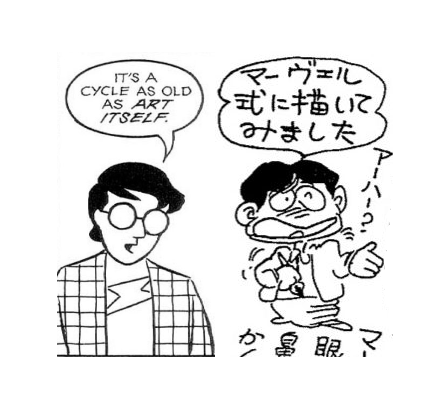
There was no "Manga"-ology at this time. Such highfalutin “-ology” (-gaku) was still entirely “in jest,” Natsume says of the title to Readingology.1 The book consists of essays written several years before Natsume will complete his first serious study on manga, Where Is Tezuka Osamu? (Tezuka Osamu wa doko ni iru, 1992), but the seeds for that seminal Manga Studies monograph is present in the four Readingology essays about Tezuka, written soon after the Master died in 1989.
In this and other Readingology essays, there is yet no formal, organized study of the trio of words, pictures, and panels that make up Natsume’s system of “manga expression theory” (manga hyōgen-ron), which gestates in Where Is Tezuka Osamu?, is born in the How to Read Manga (Manga no yomikata, 1995) sections he authored, and finally matures for a prime-time general audience in Why Is Manga So Interesting? Its Expression and Grammar (Manga wa naze omoshiroi no ka: sono hyōgen to bunpō; televised in 1996 and printed in book form in 1997). At this early point, there is no Natsume Fusanosuke, the manga scholar. There is simply Natsume, the columnist/cartoonist who reads. And writes and doodles about stuff he reads.
That’s Readingology in a nutshell. It’s vintage Natsume.
–Jon Holt and Teppei Fukuda, translators
* * *
“Māveru-shiki Amekomi no egakikata”
from Natsume Fusanosuke’s Readingology (Dokushogaku), Ushio Shuppan, 1993, pp. 85-87
Recently I got myself over to Ikebukuro. It had been a while since I was there. (I can’t say why, but I hardly go to Ikebukuro.) Anyway, as I was peering into the great manga specialty shop, Manga Forest (Manga no Mori), I was shocked seeing so many American comics lined up and taking over a shelf inside. Is everything all right? One thing that I discovered there on the shelf was a book called How to Draw Comics the Marvel Way (Stan Lee & John Buscema [Fireside Books, 1978]). Marvel Comics is one of America’s largest comics publishers and they produce characters like Spider-Man and the Incredible Hulk. Of course, the book was written in English, so I couldn’t read it. Even so, I just bought it, and that’s how shameless I can be.
As I flipped through the pages, of course it has a ton of pictures for reference, but, gosh, if you compare it to the Japanese “How to Draw Manga” sort of books, you notice right away there’s a different approach to doing this kind of thing.
First, it does start with an explanation on what kind of tools you need, and, in that sense, it’s a like our how-to books here in Japan. Next, there is a section explaining the different parts of comic illustrations. For example, when it comes to word balloons, they tell you, “We call it a balloon and in it you show regular words.” Or: “This is a dialogue balloon.” Well, in that sense, I guess it does resemble our how-to-draw-manga books quite a bit. And yet, as you get deeper into it, the way Marvel does their shading, the effect of perspective (like how you draw buildings), the effective arrangement of panels on the page (like how you get your point across visually or effectively arrange the characters), creating balance in your character bodies, how to pose your characters, etc., etc. Actually, the book goes into quite some depth on these things. There is one section where [Buscema] shows a character’s body in this exaggerated turn to the right, looking up, and then how he gradually unwinds and springs to the left, lurching forward. This is done is seven steps. The leftmost and rightmost images are considered the best, with the ones in-between them are “not bad,” and then the others in the middle labeled as “weak.” In other words, they explain that the exaggerated twisting poses where the character is turned most to the right and then to the left are the best to use. Those in the middle with their medium-grade poses are weak.
I get it. Movement in Marvel Comics always has to be flashy (hade). For the uninitiated, when these characters take these somewhat impossible poses, some people scoff at the super-exaggerated way they look. And yet, maybe over in America you have to do comics that way.

Furthermore, in the book [Buscema] does a couple of comparisons. He shows two kinds of panel flows with two people talking. First, you have a panel drawn at a simple horizon level point of view; then, in the second kind, it shows a variety of movement: various changes of the camera angles, zooming in on characters, and a character coming out from a close-up on another character’s hand. In the first example, we see how things look in an average comic. In the second example, you get the same kind of scene but done in the mighty Marvel way of showing action! Well, that’s what the book says (not me).
In any Japanese how-to-draw-manga book, they will tell you how to tell the story; how to establish your characters (kyarakutā no tatekata); how draw lines; how to use screen tone; how to show emotion; how to draw cute girl characters. In the Marvel book, you get none of that.
The impact of the structure of the panel, that’s all you need! That's basically what they say.
It’s funny, as I was looking at it, I was reminded of what Hollywood action movies are like. It then got me thinking how the Japanese way of doing manga is, on the other hand, like the way Ozu Yasujirō does film.
Even so, with a price tag of 3000 yen, this book was quite a steal.
* * *
(as published in Readingology)
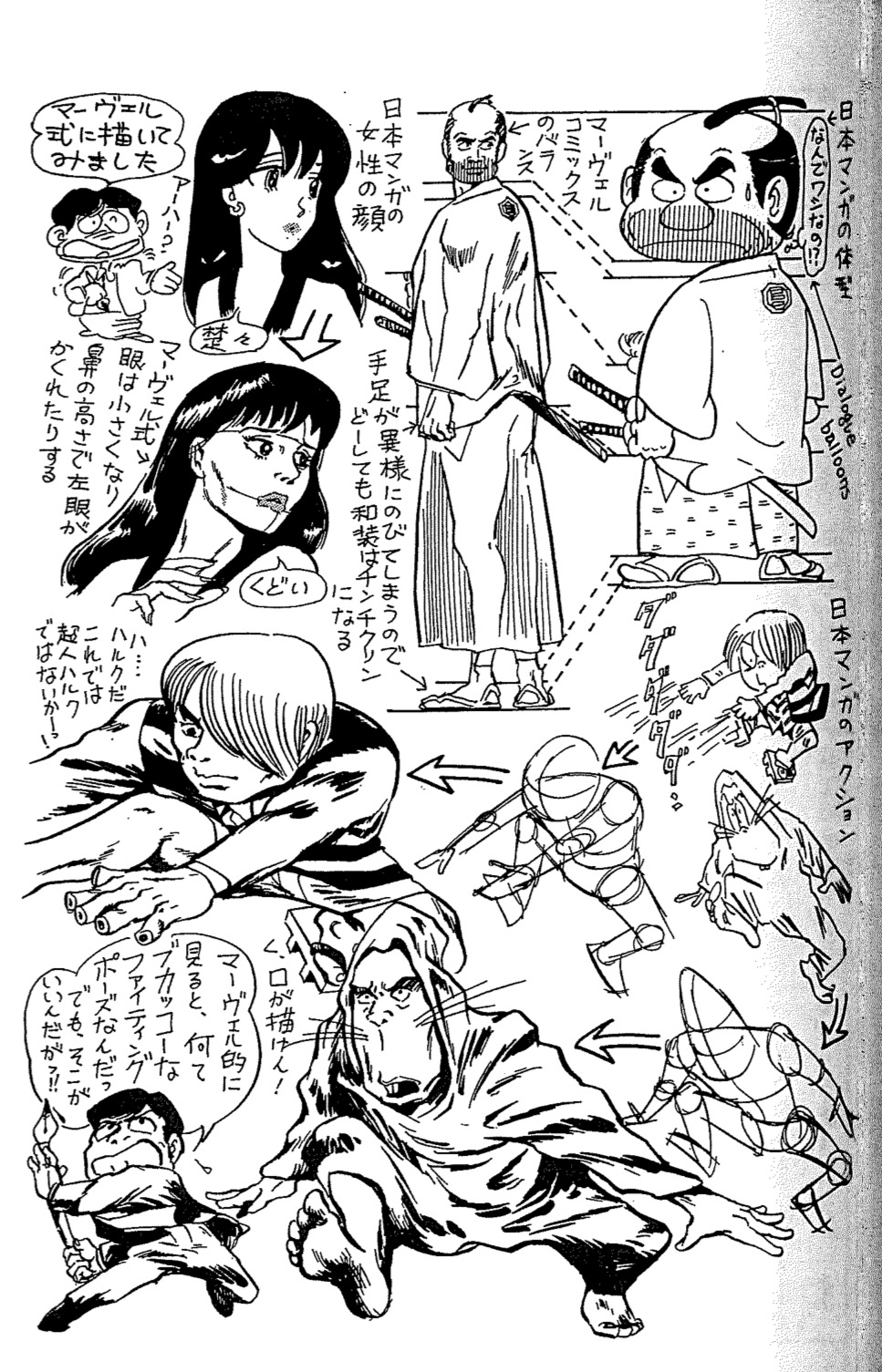
RIGHTMOST CAPTION - Japanese manga body type
SAMURAI DIALOGUE - "Why does it have to be me?!"
UPPER CAPTION ON MARVEL SAMURAI - Applying Marvel Comics balance
LOWER CAPTION ON MARVEL SAMURAI - Because his arms and legs are too long, he looks stupid in his Japanese-style clothes
CAPTION ON TOP WOMAN - Japanese Manga: a typical female face
TOP WOMAN DIALOGUE - "So graceful"
NATSUME DIALOGUE - "Then I tried drawing her the Marvel way..."
(aside) - "A-ha?"
CAPTION ON BOTTOM WOMAN - Marvel Way: the eyes can get smaller, noses can be more pronounced, and the left eye can be hidden
BOTTOM WOMAN DIALOGUE - "So tedious"
RIGHTMOST CAPTION - Japanese manga action
KITARŌ SFX - da-da-da-da-da
MARVEL KITARŌ CAPTION - Hu… Hulk! Now he has become the Incredible Hulk!
NEZUMI OTOKO CAPTION - Ugh! I cannot draw his mouth now!
NATSUME DIALOGUE - "When you look at things the Marvel Way, these fighting poses seem uncool! But hey! That’s why I like them!"
* * *
- In an afterword to the second and most recent Japanese translation of Scott McCloud’s Understanding Comics (Mangagaku, translated by Shiina Yukari and supervised by Odagiri Hiroshi, 2020), Natsume explains how the manga-ology term came to be. “I bet that my readers out there are quite wise and may know that this suffix ‘-gaku’ was, up through the 1980s, used primarily as a way to only measure the ‘joke’ of something as a kind of form of subcultural currency, but, at some point in the [media in the] 1990s, it started to be used to attract a new type of attention—a much more serious (maji na) kind.”


